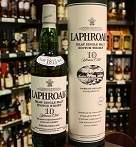Argyll and Bute: Island hopping

Fingal's Cave on the Island of Staffa
"One of the most extraordinary places I ever beheld. It exceeded, in my mind, every description I had heard of it; composed entirely of basaltic pillars as high as the roof of a cathedral, and running deep into the rock, eternally swept by a deep and swelling sea, and paved, as it were, with ruddy marble, baffles all description." Sir Walter Scott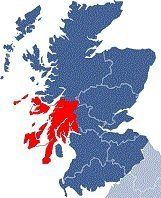
Argyll and Bute is a truly fascinating archipelago of Scotland. There are many historical sites of interest, varying from Iron Age Forts, ancient burial grounds and standing stones.With its diverse Islands and numerous sea lochs penetrating deep into the mainland, where the quickest form of travel is by sea, ferry travel is an important part of the transport network.
Getting there: either direct from Edinburgh/Glasgow or after visiting Stirling and the Trossachs
The Ferries:
from Ayrshire - Arran -Kintyre - Islay - Jura - Islay - Oban - Fort William
from Wemyss Bay - Bute - Cowal - Kintyre - Oban - Mull - Staffa - Ardnamurchan - Fort William
Getting there: either direct from Edinburgh/Glasgow or after visiting Stirling and the Trossachs
The Ferries:
from Ayrshire - Arran -Kintyre - Islay - Jura - Islay - Oban - Fort William
from Wemyss Bay - Bute - Cowal - Kintyre - Oban - Mull - Staffa - Ardnamurchan - Fort William
Stay in Oban, Tobermory on Mull or Inveraray
Oban
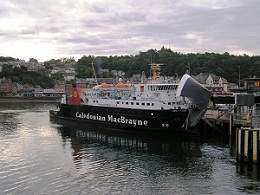
Oban is the ferry port to Mull and the Outer Hebrides. Try fresh shell fish straight of the boats on the quay.
Island of Mull
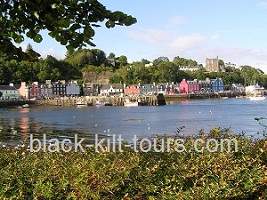
The main town is Tobermory, this sheltered bay with its brightly coloured houses may be familiar to young children as "Balamory."
Inveraray

Black & white 18th Century planned new town and nearby Inveraray Castle, Home of Duke of Argyll, the Chief of the Clan Campbell (used in the Downton Abbey Christmas Special)
Visit the islands of Iona, Staffa and Bute
Iona
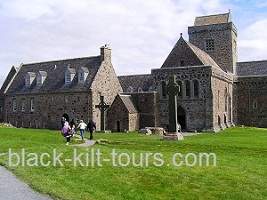
A small island off the coast of Mull where Saint Columba brought Christanity to Scotland, ancient burial ground of the Scottish Kings.
Staffa
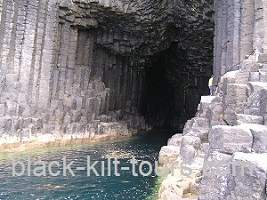
Fingal's Cave was the inspiration for Felix Mendelssohn's 1830, Hebridian Overture, "Die Hebriden"
Bute
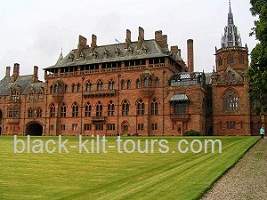
Mount Stuart is a lesson in bling with taste; this is without doubt the finest Gothic house in Scotland.
Kilmartin Glen one of the most important concentrations of Neolithic and Bronze Age remains in Scotland.

Kilmartin Glen:
One of the most important concentrations of Neolithic and Bronze Age remains in Scotland. There are more than 350 ancient monuments within a six mile radius of the village of Kilmartin, 150 of them prehistoric.
Monuments include standing stones, a henge monument, numerous cists, and a "linear cemetery" comprising five burial cairns. Several of these, as well as many natural rocks, are decorated with cup and ring marks.
Dunadd Hillfort: Located to the south of the glen, on the edge of the Great Moss. It was here the the Scots first came over from Ireland and created the kingdom of Dalriada in the 6th Century. Where the Gaelic kings were symbolically married to the land they were to rule by placing there foot into a carved fotprint in the rock. It is said that before each chief or great man swore his allegiance to the King he sprinkled earth from his own lands into the footprint, placed his right foot on the soil, and gave his allegiance while standing on his own land.
Monuments include standing stones, a henge monument, numerous cists, and a "linear cemetery" comprising five burial cairns. Several of these, as well as many natural rocks, are decorated with cup and ring marks.
Dunadd Hillfort: Located to the south of the glen, on the edge of the Great Moss. It was here the the Scots first came over from Ireland and created the kingdom of Dalriada in the 6th Century. Where the Gaelic kings were symbolically married to the land they were to rule by placing there foot into a carved fotprint in the rock. It is said that before each chief or great man swore his allegiance to the King he sprinkled earth from his own lands into the footprint, placed his right foot on the soil, and gave his allegiance while standing on his own land.
Tour the Distilleries of Argyll: Oban, Tobermory, Jura and Islay
Islay:
Famous for its malt whisky distilleries:
Ardbeg, Bowmore, Bruichladdich, Bunnahabhain, Caol Ila, Lagavulin and Laphroaig.
Jura: Deer vastly outnumber the inhabitants. Jura's closest neighbour to the north is the island of Scarba separated by the Strait of Corryvreckan with its famous whirlpool. The Jura ferry runs from Islay.
Coll and Tiree: Coll is a bird watchers paradise, whilst Tiree with its windswept sea is a mecca for windsurfers. The ferry runs from Oban.
Ardbeg, Bowmore, Bruichladdich, Bunnahabhain, Caol Ila, Lagavulin and Laphroaig.
Jura: Deer vastly outnumber the inhabitants. Jura's closest neighbour to the north is the island of Scarba separated by the Strait of Corryvreckan with its famous whirlpool. The Jura ferry runs from Islay.
Coll and Tiree: Coll is a bird watchers paradise, whilst Tiree with its windswept sea is a mecca for windsurfers. The ferry runs from Oban.
